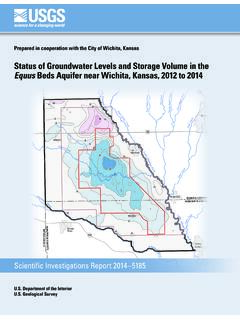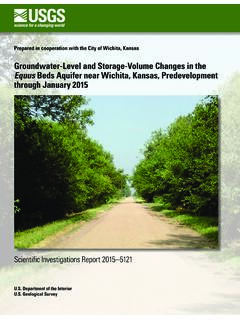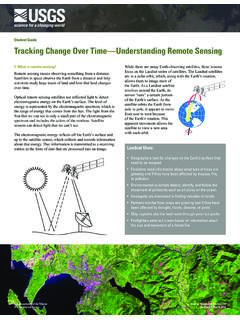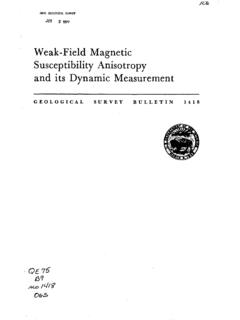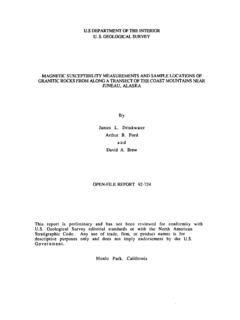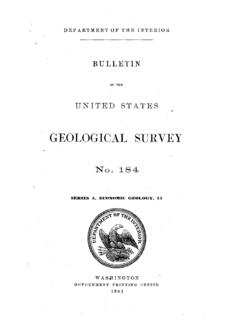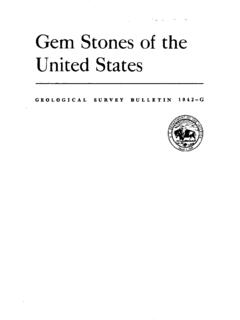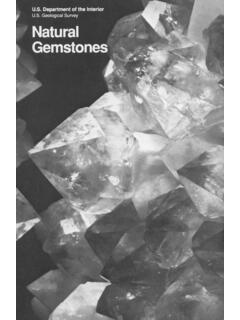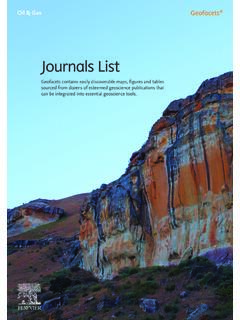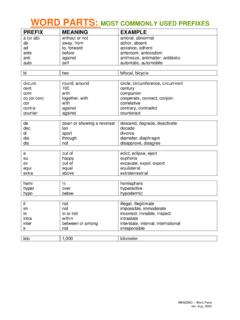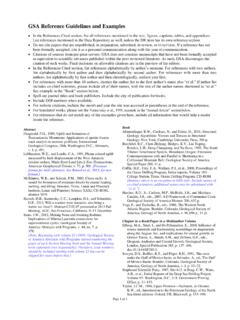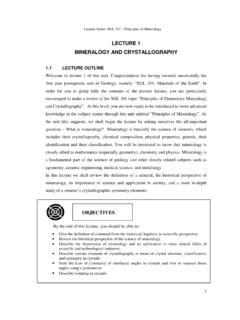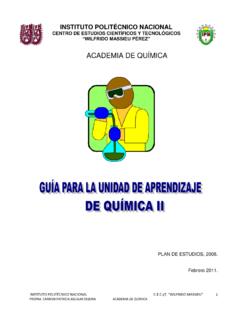Transcription of Map of Surficial Deposits and Materials in the ... - USGS
1 Map of Surficial Deposits and Materials in the Eastern and Central United States (East of 102 West Longitude) By David S. Fullerton, Charles A. Bush, and Jean N. Pennell Pamphlet to accompany Geologic Investigations Series I 2789 Department of the Geological Survey2003 MAP OF Surficial Deposits AND Materials IN THE EASTERN AND CENTRAL UNITED STATES (EAST OF 102 WEST LONGITUDE) By David S. Fullerton, Charles A. Bush, and Jean N. Pennell 2003 INTRODUCTION In recent years, Surficial Deposits and Materials have The Surficial geologic map of the Eastern and Central United States depicts the areal distribution of Surficial geologic Deposits and other Materials that accumulated or formed during the past two million years, the period that includes all activities of the human species.
2 These Materials are at the surface of the Earth. They make up the ground on which we walk, the dirt in which we dig foundations, and the soil in which we grow crops. Most of our human activity is related in one way or another to these surface Materials that are referred to collectively by many geologists as regolith, the mantle of fragmental and generally unconsolidated material that overlies the bedrock foundation of our continent. The map was derived primarily from 31 published maps in the Geological Survey's Quaternary Geologic Atlas of the United States map series ( Geological Survey Miscellaneous Investigations Series I 1420).
3 It was compiled at 1:1,000,000 scale, to be viewed as a digital map at 1:2,000,000 nominal scale and to be printed as a conventional paper map at 1:2,500,000 scale. The Surficial geologic map provides a broad overview of the areal distribution of more than 150 types of Surficial Deposits and Materials . Most of the map units are either surface Deposits or residual Materials . Surface Deposits are sediments or Materials that accumulated or were emplaced after component particles were transported by ice, water, wind, or gravity. The glacial sediments that mantle the Earth s surface in much of the Northern United States east of the Rocky Mountains are in this category, as are the gravel, sand, silt, and clay that were deposited in past and present streams, lakes, and oceans.
4 In contrast, residual Materials formed in place, without significant transport of component particles by ice, water, wind, or gravity. They are products of modification or alteration of pre-existing Surficial Deposits , Surficial Materials , or bedrock. For example, intense weathering of stream Deposits , or even solid rock, by chemical processes during a long time interval produces a residual Surficial material (residuum) that is greatly transformed from its original physical and chemical state. The map does not show soils as recognized in agriculture, agronomy, or pedology.
5 It is a generalized map of soils as recognized in engineering geology, or the substrata or parent Materials in which agricultural soils formed. Where Surficial Deposits or Materials are thick, agricultural soils are developed only in the upper part of a Surficial deposit or material. Where they are thin, agricultural soils commonly are developed through the entire thickness of a Surficial deposit or material. become a focus of much interest by scientists, environmentalists, governmental agencies, and the general public. They are the foundations of our ecosystems, the Materials that support plant growth and animal habitat, and Materials through which travels much of the water required for our agriculture, our industry, and our general well being.
6 They also are Materials that can be contaminated by pesticides, fertilizers, acid rain, and toxic wastes. In this context, the value of the Surficial geologic map is evident. The map unit descriptions provide information about (1) genesis (processes of origin) or environments of deposition: for example, Deposits related to glaciation (glacial Deposits ), flowing water (alluvial Deposits ), lakes (lacustrine Deposits ), wind (eolian Deposits ), or gravity (mass-movement Deposits ); (2) age: for example, how long ago the Deposits accumulated or were emplaced or how long specific processes have been acting on the Materials ; (3) properties: the physical, chemical, and mechanical or engineering characteristics of the Materials .
7 And (4) thickness or depth to underlying Deposits or Materials or to bedrock. This approach provides information appropriate for a broad user base. The map is useful to Federal, State, and other governmental agencies, to engineering and construction companies, to environmental organizations and consultants, to academic scientists and institutions, and to students or laymen who wish to learn more about the Deposits and Materials that conceal the bedrock. The map can facilitate regional and national overviews of (1) geologic hazards, including areas of swelling clay and areas of landslide Deposits and landslide-prone Materials ; (2) natural resources, including aggregate for concrete and road building, peat, clay, and shallow sources for groundwater; and (3) areas of special environmental concern, including areas of intense erosion and areas of potential contamination of soil and groundwater.
8 The Surficial Deposits and Materials mapped are distinguished in part on the basis of particle size or texture, particle lithology or composition, and other physical, chemical, and engineering characteristics. Several classification systems for engineering and agricultural soils are in use, and terminology differs. The textural or particle-size divisions (for example, clay, sand, pebbles, or boulders) and the matrix nomenclature (for example, loamy sand, clay loam, or silty clay) of the Department of Agriculture are used here to ensure uniformity of terminology. Letter symbols in parentheses indicate map units that are distinguished on the basis of Deposits or Materials of two or more genetic categories.
9 The significance of time divisions (for example, Holocene, Pleistocene, Wisconsin, Illinoian, or pre-Illinoian) is indicated in table 1. 1 Table 1. Time terminology applied to Surficial Deposits and Materials in the Eastern and Central United States. Informal Informal Time scale (sidereal years) nomenclature based on mountain nomenclature based on continental Informal time nomenclature Formal time nomenclature glaciation glaciation Holocene 11,680 ? ? ? ? ? 35,000 ? ?? ? Pinedale ? Late Wisconsin Middle Wisconsin Late 55,000 Pleistocene 80,000 Early Wisconsin 128,000 ?
10 ? ? ? ? Sangamon Pleistocene QUATERNARY 310,000 ? ?? ? Bull Lake ? Illinoian Middle Pleistocene 778,000 Pre-Bull Lake Pre-Illinoian Early Pleistocene 1,806,000 Pliocene TERTIARY 2 Surficial Deposits GLACIAL Deposits (TILL) Till is a predominantly nonsorted and nonstratified, generally heterogeneous mixture of clay, silt, sand, granules, pebbles, cobbles, and boulders deposited directly by glacial ice. In some places, the till was modified by collapse, creep, flow, and other surface processes subsequent to deposition. The till that comprises the map unit in many areas overlies older till and stratified Deposits that are not included in the map unit.
